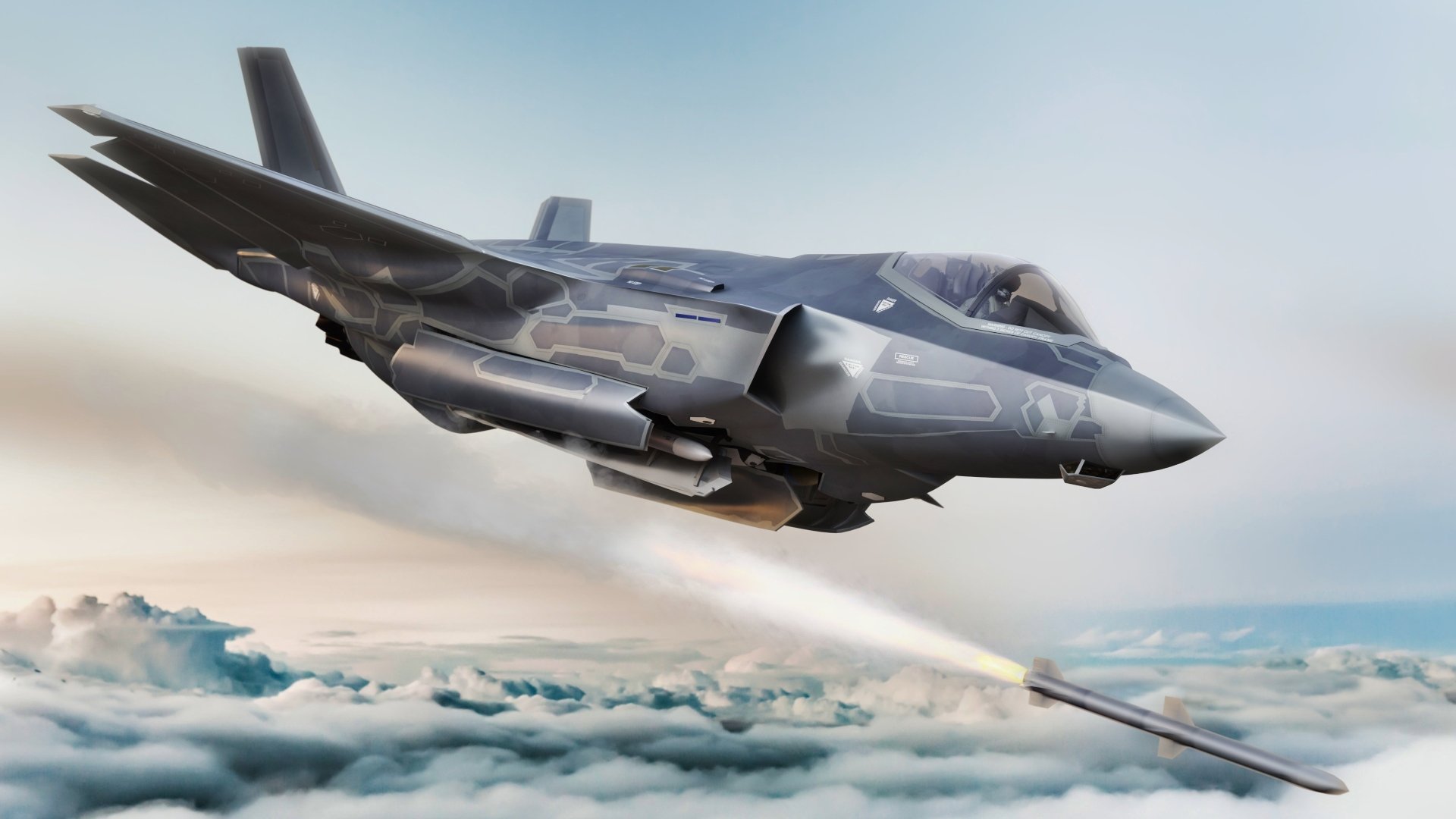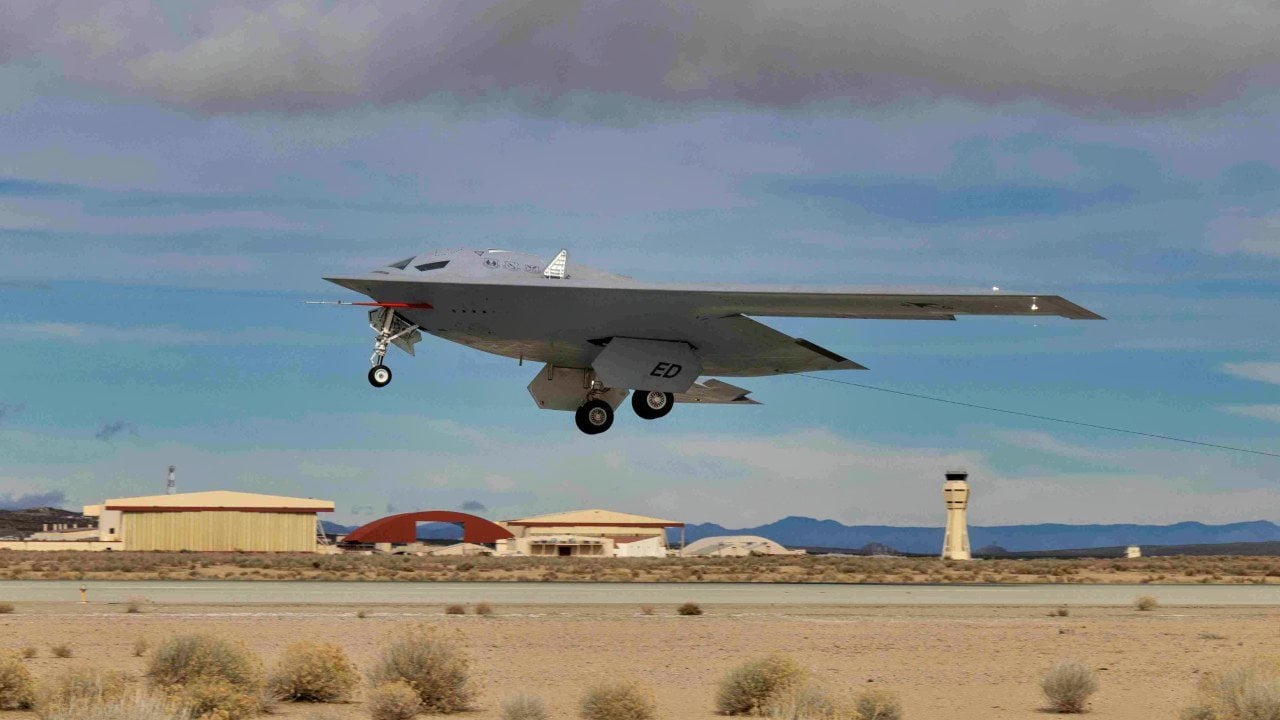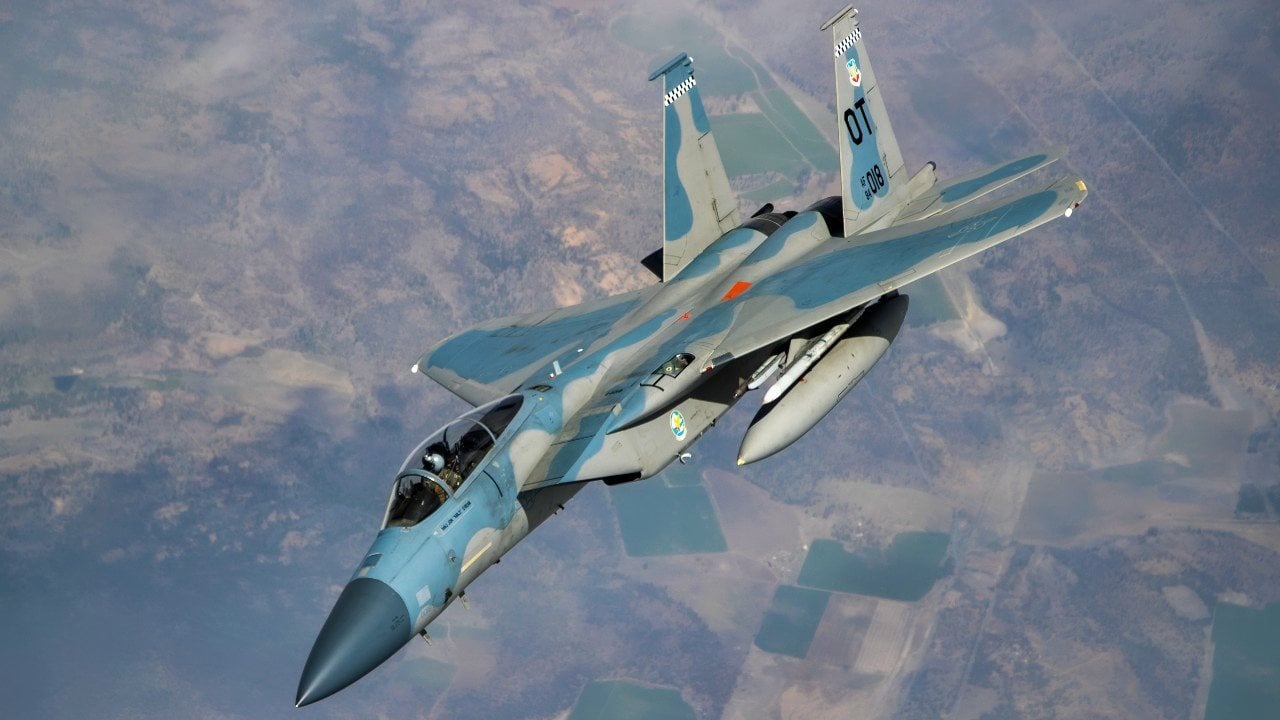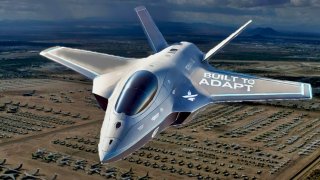The U.S. Air Force's Light Fighter 'Dream' Has Problems
Air Force Chief of Staff General David Allvin has suggested a shift away from the costly, long-lasting fighter programs like the Next Generation Air Dominance (NGAD) fighter in favor of more adaptable, smaller, and cheaper modular aircraft.
And while shortening a fighter’s operational lifespan from 60+ years to around ten to twenty might sound even pricier than funding exquisite jets like the F-35, there’s a reasonable argument to be made that it would actually cost much less in the long run.
Could building new fighters more often actually cost less?
Today, the vast majority of a fighter’s overall program cost is associated with long-tail sustainment — meaning the cost of operating, maintaining, repairing, and upgrading aircraft over their intended lifespans.
The F-35 program, for instance, is often referred to as a $2 trillion effort as though that immense figure represents the high research, development, and procurement costs of these jets, when in reality, $1.6 trillion of that figure – a whopping 80 percent of the total cost – comes from the projected maintenance and sustainment required to keep the stealth fighter viable throughout its intended lifespan, which stretches all the way into the 2080s.
To dramatically oversimplify the math, that shakes out to about $2 trillion for a fleet of roughly 2,500 fighters operated over the span of 65 or so years — or roughly $800 million invested into each airframe for six and a half decades of service, with around $640 million dedicated to sustainment and only around $160 million in research, development, and procurement costs per jet.
While sustainment costs tend to increase over time (just like it costs more to keep an old car on the road), if we simplify the math by averaging the F-35’s projected expenses over that lifespan, sustainment costs alone could fund the research, development, and procurement of a new comparable fighter design every 16.25 years. Then, when you consider the use of modular systems already in production for each subsequent design and eliminating the need for building airframe-specific repair depots and the like, it starts to look pretty feasible that fielding new fighters every 10-15 years could even be the lower cost option.
Of course, that possibility does come with a fairly sizeable list of assumptions, including the idea that repair depots for integral components wouldn’t require significant overhauls between fighter iterations and that emerging technologies would continue to more-or-less mirror the repeated cost overruns of the F-35 program, so the actual cost of transitioning to this more frequent acquisition model could feasibly end up significantly higher or lower than our estimates — and there’s the rub.
Embracing adaptability means embracing uncertainty
The biggest problem with shifting to the Light Fighter or Digital Century Series acquisition model for the U.S. Air Force is that it’s simply never been attempted in the modern era, and as such, there are few places to look for reliable data when attempting to assess the most effective path forward. Either decision will quickly become the fulcrum point of a new cost lever that stretches all the way to the end of the 21st century, and as such, a seemingly small miscalculation on today’s end could very quickly become an insurmountable budgetary shortfall a few decades down the road.
Air Force acquisitions are an industrial and economic behemoth, and as is the case with any massive enterprise, making such a dramatic pivot would require overcoming a great deal of cultural inertia both within the branch and, even more likely, within America’s industrial base. For companies like Lockheed Martin, winning a fighter contract that includes long-term sustainment is effectively a guarantee of massive revenue numbers for a half-century or more, and that’s something these influential corporate giants would likely fight to keep on Capitol Hill.
That isn’t to say these aren’t challenges that can be overcome — airpower has always been an evolving enterprise, after all — but with so many question marks looming overhead and the near certainty that such a shift would face some serious political challenges, one could make a reasonable argument that it’s simply too late to try to force this change onto the fighters already in development today. Getting these new jets into service under an all-new acquisition model within strategically necessary timelines would require immediately implementing these sweeping changes across the branch, the industry base, the designs themselves, and Air Force training doctrine all at once — all while the Air Force splits its budget and focus among other high-profile endeavors already underway like the B-21 Raider and LGM-35A Sentinel ICBM.
And to be clear, that’s not just the assessment of a cynical researcher looking for holes to poke in an exciting new concept — it’s actually the position argued by Air Force Secretary Frank Kendall just last year.
When asked directly about how the transition to digital engineering and virtual testing environments could allow for Will Roper’s proposed Digital Century Series approach to fighter acquisitions, Kendall — who is seen as the mastermind behind the Air Force’s ongoing efforts to field AI-enabled drone wingmen being designed using a similar approach — tried to reign in the growing enthusiasm for the idea, even going so far as to call it “over-hyped.”
“I have a lot of respect for Will Roper. I’ve worked with him a lot,” Kendall said. “I think he has some really interesting ideas … [but] I think you have to be careful about where you apply those ideas.”
According to Kendall, digital engineering and increasing modularity throughout fighter designs could have a massive impact on both developmental costs and timelines, but realistically, might reduce each by around (a still notable) 20%, rather than ushering in a revolution in aircraft acquisitions. Kendall also clarified that he isn’t entirely confident in even that 20% figure because, again, there’s simply no good data to look to for modeling. Although, as General Allvin recently pointed out, Northrop Grumman’s B-21 Raider stealth bomber and Lockheed Martin’s new Mako hypersonic missile — both designed and tested in digital environments — could each become models for programs of the future to emulate (and for future predictive modeling).

But Kendall also pointed out how similar claims about digital engineering were made during the F-35’s development cycle, which clearly didn’t manifest as predicted.
“Digital engineering isn’t magic,” Even Roper agreed. “Just because you use it doesn’t mean that all the problems of acquisition get out of your way.”
The Air Force needs new missiles, new bombers, and new fighters… But is struggling to pay for them all
Last year, it seemed as though Kendall had nixed the idea of pursuing this concept for at least the time being, but since then, the Air Force’s economic outlook for the years ahead has certainly changed — so much so, that the Next Generation Air Dominance fighter program that was expected to deliver a production contract this year is now being re-evaluated.

As too-important-to-fail programs like the LGM-35A Sentinel ICBM swell to 81 percent over budget, the Air Force has to adjust to accommodate the loss of tens of billions of dollars in near-future planning, and with contracts already awarded for these new missiles and new stealth bombers in the B-21 Raider, the only big-ticket item left on the chopping block is America’s next air superiority fighter.
Multiple different options are now being considered to ensure America can maintain air dominance in the decades ahead, but for significantly less than initially anticipated. This includes stretching the service lives of F-22 Raptors, which are already amid a multi-billion dollar update meant to ensure they overmatch the most advanced adversary jets entering service.
The F-22 design may date back to the late 1980s, but the aircraft still has the stealth and aerobatic chops to maintain a competitive advantage for years to come, but with Raptor production cut short after just 186 airframes were delivered — only 150 of which were actually combat coded — the Air Force is facing the risk of airframes aging out of service before a viable replacement can be fielded.
With an increased emphasis on collaborative combat aircraft, or AI-enabled drone wingmen, some have questioned whether a new top-tier fighter is necessary at all, as the Block 4 F-35 will have the onboard computing power necessary to manage constellations of these drones on their own, supplemented by advanced sensors on other stealth platforms like the RQ-180 and B-21.
And then, of course, there’s the light fighter concept that places a new emphasis on adaptability over longevity — which would see the United States field fighters meant not to fly for 6,000, 8,000 or even 20,000 hours like the F-15EX, but instead for less than 4,000 — with design for replacements already underway when each new fighter enters operational service.

This model has tons of potential to help ensure America fields only the latest and most capable tactical aircraft in the world. It’s an approach to aircraft design that could change everything about air warfare… But it also comes with arguably even larger risks than today’s long-standing acquisition model. And while today’s NGAD woes can be traced, at least in some part, to overages associated with America’s new ICBM, we need look no further than its current ICBM fleet to see the dangers associated with assuming defense budgets will allow for replacement systems to actually come online every 10 or so years.


